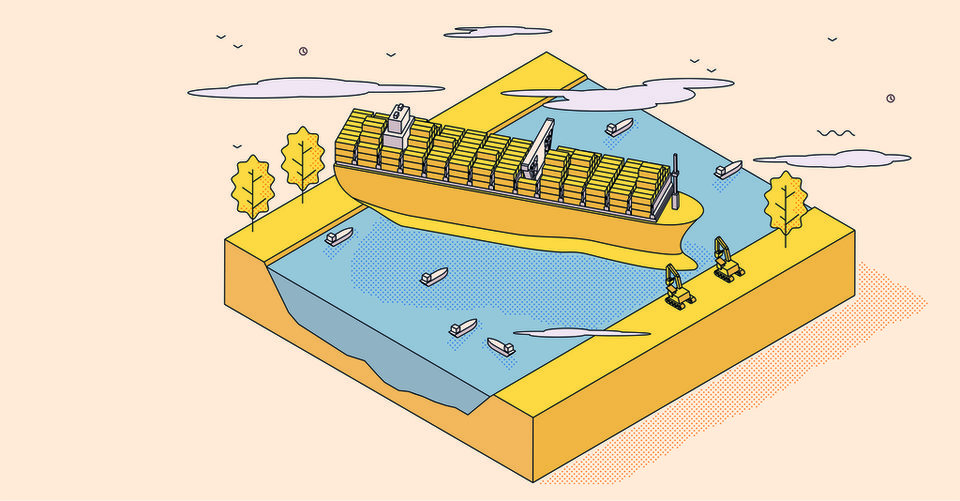plastic
Resin shortage renews focus on plastic alternatives
Resins are some of the most used materials in packaging. However, packaging industry professionals are finding themselves having to find alternative materials due to serious disruptions to the supply chain earlier this year. Jessica Paige investigates alternatives to common plastic resins.

The past year has created turmoil across the packaging industry, especially for supply chains. In 2020, the Covid-19 pandemic created uncertainty, with delays in the supply chain that continued into 2021.
For the plastic resin supply chain, this was compounded further by a series of unfortunate events.
Freezing temperatures in February then led to the closure of chemical plants in the US, including some of the country’s largest petrochemical complexes in Texas owned by Saudi Aramco, Marathon Petroleum, and Exxon Mobil.
Storms resulted in the grounding of container ship Ever Given in Egypt’s Suez Canal in March, causing huge disruption to global supply chains.
The resin supply network has been significantly impacted by such disruptions. Because of this material shortage, prices have increased, or commonly used resin has been difficult to obtain.
Resins are small materials that form polymers, which are then made into plastic material for packaging. Resins are the beginning stage in making any plastic material and come in many different forms; the shortage of this material means that plastic products have become more difficult to obtain as of late.
Fortunately for the packaging industry, many alternative materials to plastic and the more common types of resin are out there that manufacturers can use to design and create products.
Plant-based bioplastics
Bioplastics are made from non-petroleum-based natural sources, such as corn and plants, which are then broken down into polylactic acid (PLA).
Because bioplastics are biodegradable, they can be broken down in a matter of weeks by water, CO2, or microorganisms. This is because cornstarch molecules used in the material slowly absorb water and swell, which causes them to break into small fragments for bacteria to digest.
The most common types of bioplastics are PLA, as well as polyhydroxyalkanoate, made from microorganisms. This type of resin can be used to make single-use plastic products – such as drink bottles, food containers, and films.
However, even though this material is made from natural materials, the material is not as eco-friendly as many would think.
The recycling process for bioplastics can be difficult, as they need to be recycled in a separate stream, due to bioplastics degrading the recycling process if mixed with other plastics.
As well as this, when bioplastics are recycled in the same stream as organic material, the material is deprived of oxygen, which causes it to produce methane – a greenhouse gas that causes damage to the environment.
Bioplastics also require a very high temperature to compost and not all recycling facilities have the equipment required to recycle the material, meaning that they can end up in landfill more often than other types of plastics.
Paper and cardboard
Paper and cardboard are materials that are commonly used as alternatives to plastics, especially within the food packaging industry. It is cost-effective, as the material can be bought in bulk, reusable, and is easy to print on.
Cardboard is sourced from renewable wood pulp and has a high recycling rate, unlike plastic, which is usually sent to landfill. It also has environmental benefits in that it is biodegradable and will break down a lot faster than plastic.
But similarly to resin, paper and cardboard are also experiencing a shortage due to growth in the ecommerce market last year. For this reason, it may not be the easiest alternative to seek in the current market.
Alongside this, there is debate in the packaging industry surrounding whether paper and cardboard packaging is actually more eco-friendly than plastic, as producing paper and cardboard is highly water-intensive, generates emissions, and can lead to deforestation.
Despite what most consumers think, it can also be difficult to recycle as the material becomes non-recyclable if contaminated with food or waste, whereas plastic can be washed.
Bamboo
Bamboo is a good alternative to plastic as it is durable, versatile, and strong, with low production costs. It is made by grinding the plant into a fine powder, which manufacturers can then mould into any desired shape.
Bamboo packaging has become a popular material for eco-conscious companies, as the material is natural, sustainable, and comes from one of the fastest-growing plants in the world.
Bamboo grows faster than hardwood, with most varieties reaching maturity and becoming harvestable in 3-5 years.
Another way that bamboo is sustainable is due to it not needing pesticides, irrigation, or replanting, resulting in a lower environmental impact. There is also no need to add bleach or toxins to the material.
Aluminium
Unlike plastic, aluminium is infinitely recyclable. As a material, it is highly versatile and malleable, marking it as a popular plastic alternative, especially in the food and beverage industry.
As well as being infinitely recyclable, aluminium can withstand temperatures from -40°C to 350°C and ensures equal distribution of heat.
However, although the material has excellent recycling prospects, aluminium is mined from bauxite, a process that can generate air and water pollution and cause damage to the local communities and animal and plant life.
What is the best plastic alternative?
The best plastic alternative is dependent on what companies need out of their packaging.
For example, if sustainability is an important goal for companies, looking into eco-friendly alternatives such as bamboo and aluminium would be a good way to move towards those goals.
On the other hand, if companies are looking for a temporary solution whilst resin supplies remain low, something like bioplastics may be the way forward, so long as companies are aware of the environmental effects of such material.
In either case, there are many alternatives to plastic out there that packaging companies can look to when designing and creating products.